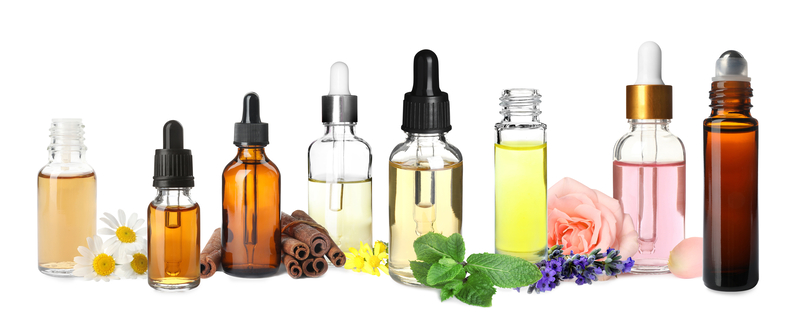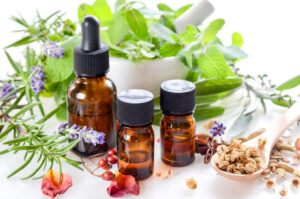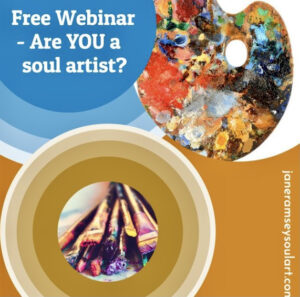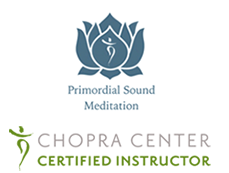Essential Oils for Beginners
This article on essential oils for beginners contains insights, basic information, and safety precautions from someone with expertise in aromatherapy. Learning how to use aromatherapy for wellness has been on my bucket list for some time.
I am fortunate to have a good friend, Kathy Kellum who has many years of experience in essential oils for personal use and I have interviewed her for this article. Not only is Kathy a Reiki Master; IET Master and Artist, but she is also a shamanic practitioner
What are essential oils?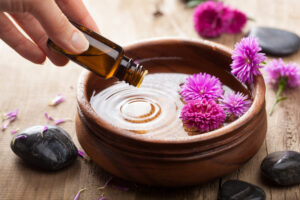
Essential oils are very potent aromatic compounds. They are referred to as essential because they are made up of the very essence of the plants they are extracted from. The aromatic compounds contained in these oils are present in very high concentrations.
What is aromatherapy?
Aromatherapy is the practice of using essential oils to improve health and well-being. In other words, you can use aromatherapy to promote not only your physical but also emotional and mental well-being.
How are essential oils administered?
There are four typical ways. First, you can use a diffuser or humidifier. This approach scatters the molecules of the oil into the atmosphere.
Secondly, you can apply the oil topically to your skin or hair after they have been considerably diluted using a carrier oil or lotion. You can apply the diluted mixture in bathing, by massaging it into your skin, or by using hot or cold compresses.
Thirdly, you can inhale the oil directly from the vial. Or, you could add one to two drops to your palm and inhale from the palm of your hand. Alternatively, you could add a few drops to a bowl of boiling water and then inhale the mixture with a towel placed over your head.
Fourthly, essential oils also have a vibratory property. You could think of essential oils as the tuning forks of the plant kingdom.
Are these methods of administering essential oils safe?
There are some important safety measures to understand in using essential oils. Essential oils are powerful plant medicines that can affect us on several levels. Olfactory (sense of smell); topical application (bloodstream) and vibratory. Because essential oils are very potent, they can pose risks for certain groups of people. For example, pregnant women, breastfeeding mothers, and people who have a history of diabetes, epilepsy, and seizures should use aromatherapy only with the guidance of a qualified practitioner.
How can you properly dilute essential oils?
Carrier oils are normally used to dilute essential oils. This is because carrier oils help to balance the potent nature of the oils so that they can last longer and be effective in performing the desired function.
What is your favorite carrier oil?
I highly recommend fractionated coconut oil as it doesn’t leave an oily-smelling residue in your clothing which I have found is very difficult to wash out. Although for my personal use I really prefer an unscented lotion or body butter. Jojoba oil is also very nice. It has good availability and is a reasonable price range. It has been widely used in folk medicine for skin conditions and hair nourishment.
Can you explain how essential oils work?
Essential oils primarily enter the human body through skin absorption and inhalation. 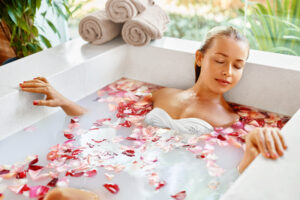
Essential Oils have tiny molecules, which disperse into the air (especially when diffused) and enter through the nose. When inhaled, the scent molecules reach the olfactory epithelium, which consists of millions of receptor cells located at the top of the nostrils, just below and between the eyes. The scents are then converted to messages, which are converted and relayed to the brain for processing.
Inhalation provides the most direct route to the brain. Scents take a direct route to the limbic system, including the amygdala and the hippocampus, the regions related to emotion and memory.
With every breath, some scent molecules inescapably travel to the lungs. These molecules are absorbed by the mucous lining of the respiratory pathway. Other molecules reach the alveoli and are transferred into the bloodstream.
How important is it to use a high-quality oil?
Since the essential oil will make its way into your bloodstream, it is very important to use good quality oil. Quality producers use sustainable harvesting; a clean production process and adhere to high standards of purity. You truly do get what you pay for. Less expensive oils frequently contain fillers and perfumes – that is why they are cheaper.
What parts of the body are typically used for direct application of essential oils in a carrier oil?
Essential oil molecules are so small that when applied to the skin; they are able to pass through the outer layer of the skin. From here the essential oil molecule passes through the dermis, into the capillaries, into the bloodstream. Permeability of the skin is a factor in how essential oils are absorbed. Thinner skin, such as behind the ears and the inside of the wrists are very permeable.
The palms of the hands and feet, armpits, and scalp will more readily absorb oil molecules than the arms, legs, belly, back, etc.
Another factor to consider when applying essential oils to our skin is the viscosity of the carrier oil in which the essential oil is diluted.
Sweet Almond, Fractionated Coconut Oil, and Grapeseed oil are less viscous and penetrate the skin easily. Thicker oils such as Avocado or Olive Oil do not offer the best penetration level.
What dilution formula do you recommend?
BASIC DILUTION FORMULA for topical application:
1% 2% 3%
1 oz carrier 5-6 drops 10-12 drops 15-18 drops
Which dilution formula should be used?
1% dilution – children under 12 and elderly, pregnant women, and people with long-term illness or immune system disorders. A 1% dilution is a good place to start with individuals who are sensitive to fragrances, chemicals or other environmental pollutants.
2% dilution – use for general health-supporting blends
3% dilution – Use when creating a blend for a specific, acute health concern under the guidance of an experienced practitioner
If using a 10 ml roller bottle:
1% dilution is 2 drops of essential oil
2% dilution is 4 drops of essential oil
3% dilution is 6 drops of essential oil
What formula do you use for balancing chakras?
I typically use a set of 2% dilution in bottles with eye droppers for chakra use. There are many resources online for essential oil choices for the chakras so you can modify to what truly resonates with you personally.
What precautions would you like to make sure readers understand?
Avoid getting essential oils on mucous membranes. Do not apply to open wounds. Avoid the armpits and private areas. Avoid ingesting essential oils unless you are trained in their medicinal use.
The citrus essential oils may cause photosensitivity so do not apply topically and go out in the sun.
Some of the oils are considered HOT oils and always need to be diluted with a carrier oil before applying topically. Some examples are clove, cinnamon, and pepper.
If you ever apply an essential oil topically and it feels hot, burns or itches – immediately apply some carrier oil to it – do NOT wash with soap and water. Soap & water will push it deeper into your skin. If you don’t have a carrier oil, apply cooking oil from your kitchen.
Explain more about the vibrational qualities of essential oils.
Most people think of using essential oils because they are attracted to the aroma or the scent, but it essential oils can be used vibrationally as well.
A healthy human body has a frequency of 62-72 MHz. This drops to 57-60 MHz if you have a cold or flu. The frequency of rose essential oil has been seen to go as high as 320 MHz, lavender 118 MHz, and sandalwood 96 MHz.
Therefore, inhalation of essential oils not only has an effect on emotions but also has a physical impact.
What are some of your favorite oils?
One of my very favorite essential oils for daily use is Geranium. I find it uplifting & joyful and also discovered many years ago that it is a useful mosquito repellant. I always keep Frankincense; Helichrysum and Copaiba on hand. Some of the other oils that I make sure to have in my stock are Sandalwood; Cedar; Chamomile; Vetiver; Rosemary; Clary Sage; Sweet Orange; Violet Leaf; Angelica; Rose Absolute and Patchouli.
What are some of your favorite aromatherapy uses?
I have a set of diluted essential oils that I use on my Chakras. I will use specific essential oils when I feel that I need help feeling grounded/balanced or sometimes when I feel that I need a bit of a perk me up. As I mentioned before I always start my day with some Geranium. I have a blend that I have created to connect with my creative muse and another when I am working with angels. I have a diffuser in one room of our house near the entry door and will diffuse a variety of oils depending on my mood – it nice to smell when entering the house.
One of my favorite essential oils is rose. Why is rose essential oil so expensive?
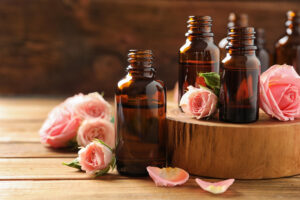 It takes 60,000 roses per 1 ounce of oil. That works out at over 20,000 roses for just 10ml of rose essential oil.
It takes 60,000 roses per 1 ounce of oil. That works out at over 20,000 roses for just 10ml of rose essential oil.
True, unadulterated and pure rose essential oil (Rosa damascena / Damask rose) is actually pretty hard to find. In almost all cases you will find a highly diluted oil, usually, no more than 5% rose oil in a base of oil (or even alcohol) or a rose absolute. This is because of the high cost of organic rose production and process of extraction – an oil extraction through steam / thermal distillation of its petals.

Kathy Kellum – Reiki Master; IET Master, Artist, and Shamanic Practitioner.
Thank you for reading this post. Feel free to share it. Enormous thanks to Kathy Kellum for sharing her expertise.
As with any other kind of practitioner, the best way to find a good aromatherapist is through referrals from healthcare providers, family, colleagues, and friends.
When choosing a practitioner, it is important to consider their education and training, experience, and philosophy of care. Lists of aromatherapists are also available online (see the Aromatherapy Registration Council ).
Find out more about my journey through my book on Amazon: Vision Quest; A Journey to Happiness by Jane Ramsey.
Enroll in my Free Webinar to learn if SoulArt Meditation is right for you.
Read how Creativity is like Meditation here.
Learn the Benefits of Pranayama.
To learn more about Chakras read the Blogs below:
Understanding Chakras
Practice gentle chakra tuning
Root Chakra
Sacral Chakra
Solar Plexus Chakra
Heart Chakra
Throat Chakra
Brow or Third Eye Chakra
Crown Chakra
Interested in the Universal Laws? The Blogs for each of the twelve Laws are found below:
Divine Oneness here.
Vibration here.
Correspondence here.
Attraction here.
Inspired Action here.
Perpetual Transmutation of Energy here.
Cause and Effect here.
Compensation here.
Relativity here.
Polarity here.
Rhythm here.
Gender here.
Read how Creativity is like Meditation here.

Jane Ramsey is an Executive Contributor for Brainz Magazine
Learn the Benefits of Pranayama.
To find out more about me and our course offerings, please click the links above the Blog Post or here:
Browse courses by Jane Ramsey
Find out more about Jane Ramsey
Learn about Jane Ramsey’s Book; Vision Quest; a journey to happiness
Sign up here to receive future blog posts.
Namaste,
Jane

